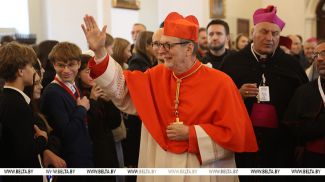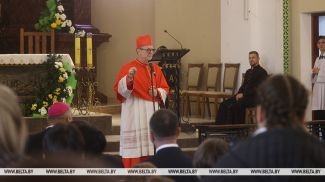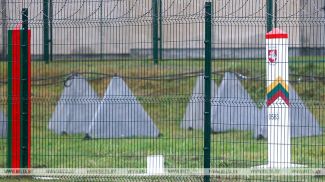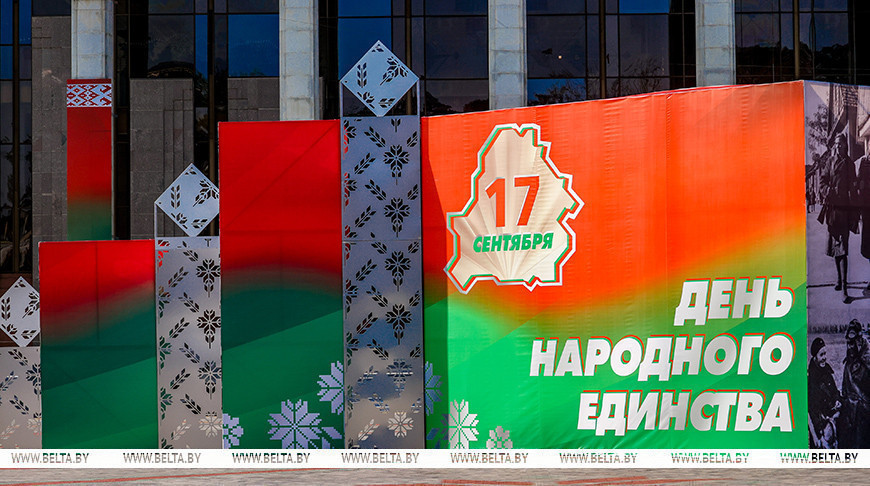
The holiday celebrates the beginning of the Red Army's liberation campaign in Western Belarus in 1939, which resulted in the reunification of the Belarusian people, divided under the terms of the Treaty of Riga.
The territory of Belarus was divided between the two states as a result of the Polish-Soviet War of 1919-1920. The eastern part of Belarus became the Byelorussian Soviet Socialist Republic, part of the USSR. The western territories of Belarus were annexed to Poland - some of the lands were seized by the Poles during the war, and some of them were agreed under the Treaty of Riga, signed on 18 March 1921.
The Polish state included the territory of more than 112,000 square kilometers with a population of 4.6 million people (according to 1931 data). These lands were given the unofficial name of Western Belarus, which the Polish authorities did not recognize. In official documents, these territories were more often called Kresy Wschodnie.
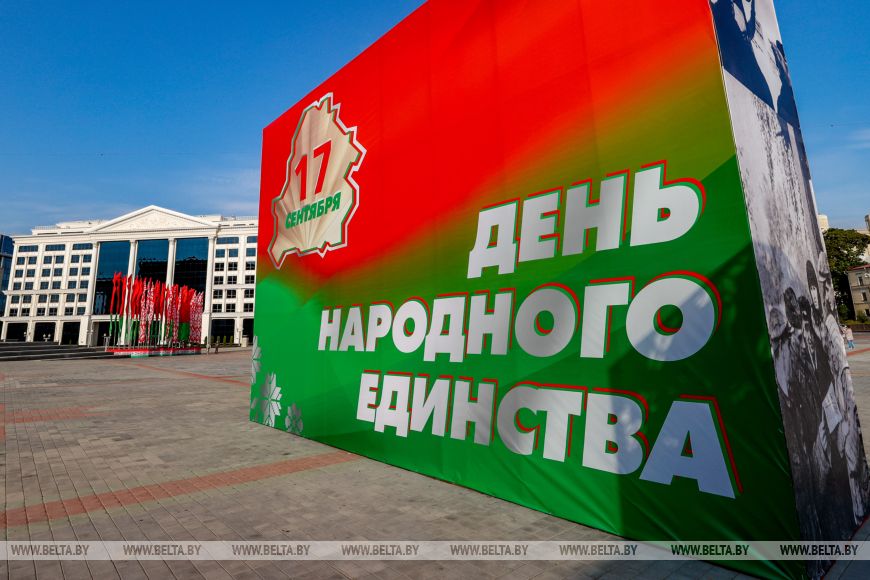
Western Belarus was a relatively backward agrarian outskirt of Poland. The region was mainly used by the state as a source of raw materials and cheap workforce. The working day in industry lasted for 10-12 hours, salaries were lower than in the other Polish regions. More than 80% of the region's population was engaged in agriculture.
The Polish authorities pursued a policy of polonization and assimilation against Belarusians. They prohibited the use of the Belarusian language in state institutions and banned Belarusian schools. Out of 400 Belarusian schools that operated on the territory of Western Belarus before the Polish occupation, only 16 remained in 1934, and none was left in 1939. The Belarusian press was persecuted. If there were 23 Belarusian newspapers and magazines legally published in 1927, then in 1932 there were eight of them, and only pro-Polish and clerical publications remained until 1937. There were no Belarusian theaters and musical institutions in Western Belarus. The authorities found various reasons to close Belarusian publishing houses, libraries and village reading rooms.
The main method the Polish government used was coercion and often terror. Mass police repression of the population during punitive expeditions to subdue farmers uprisings was commonplace. Political trials were a regular thing. Prisons were used to isolate “socially dangerous elements”. The Bereza Kartuska concentration camp was established in 1934. According to incomplete data, the camp saw more than 10,000 prisoners over the five years of its operation.
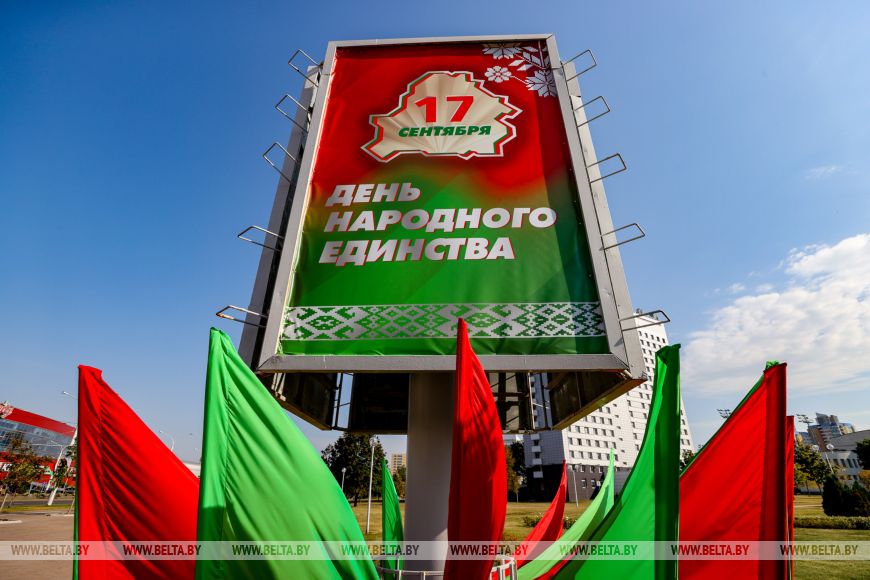
The Belarusian people have never accepted the situation they got in. For 20 years Belarusians fought for social and national liberation, and their struggle took different forms at different times, but never ceased. Workers' and farmers' demonstrations were a common thing at that period. Cultural and educational organizations, with the Belarusian School Association to be the leading one, made their considerable contribution. The Communist Party of Western Belarus was at the head of the revolutionary movement for many years.
In the late 1930s, the threat of war from Nazi Germany loomed over the entire Europe. The situation required joint actions from the leading countries of Western Europe and the USSR to prevent the war. Realizing this, the Soviet Union made a number of attempts to set up an anti-Hitler alliance with the UK, France and other Western countries in the second half of the 1930s. However, the leading European states refused the offer, secretly seeking to direct Hitler's aggression eastward. The Soviet Union was faced with a choice: either to continue a one-on-one confrontation with Germany's growing military power, or to make attempts to diplomatically ward off the threat. Under such circumstances, the USSR concluded a nonaggression pact with Germany, which was signed in Moscow on 23 August. The document was accompanied by an additional secret protocol on the division of spheres of influence between Germany and the Soviet Union. According to this document, in the event of the liquidation of the Polish state and the division of its territories, the USSR's sphere of influence included the lands of Western Belarus.
On 1 September 1939, Hitler's Germany attacked Poland. The Second World War began. German divisions crossed the border in several directions and began to advance rapidly deep into the Polish state. Its government and commanders were unable to organize an effective defense and abandoned the country in the third week of the war.
In mid-September, German troops approached the territory of Western Belarus and Western Ukraine. The German leadership, referring to the agreement of 23 August, hurried the Soviet Union to act against Poland. Stalin, however, was delaying the intervention. Only when the Polish army was defeated, practically all the original Polish territories were occupied by German troops, and only isolated points of resistance remained in the country, did the Soviet government order the Red Army to cross the border.
On the morning of 17 September 17, the Polish Ambassador in Moscow received a note from the Soviet Government. It said: “The Polish-German War has revealed the internal instability of Polish State. During 10 days of military operations Poland has lost all its industrial regions and cultural centers. Warsaw as the capital of Poland no longer exists. The Polish Government has scattered and gives no signs of life. This means that the Polish State and its Government factually have ceased to exist. By this fact in itself treaties concluded between the Union of Soviet Socialist Republics and Poland have lost their validity. Left to shift for itself and left without leadership Poland has become a convenient field for all kinds of eventualities and unforeseen contingencies which may constitute a threat to the Union of Soviet Socialist Republics. Therefore having been heretofore neutral the Soviet Government can no longer adopt a neutral attitude to these facts. The Soviet Government can also not be indifferent to the fact that the consanguine Ukrainians and Belarusians living on the territory of Poland who have been left to the whim of fate should be left defenseless. In view of this situation the Soviet Government has issued instructions to the Red Army High Command to give the order to its forces to cross the Polish border and take under their protection the life and property of the population of Western Ukraine and Western Belarus.
The note was signed by Molotov, People's Commissar for Foreign Affairs of the USSR. He also made a radio address to the Soviet people.
The advance of the Soviet troops was rapid: on 18 September they occupied Sventyany, Lida, Novogrudok, Slonim, Volkovysk; and Pruzhany and Kobrin on 19 September.
Most units of the Polish Army surrendered without a fight. The units that included mostly ethnic Ukrainians and Belarusians, went over to the side of the Red Army. They were immediately sent home. Polish officers and policemen were sent by echelons to Soviet camps.
The main part of the population of Western Belarus welcomed the Soviet soldiers with joy and rendered effective assistance. Military and revolutionary committees were set up in many places to organize detachments of workers and farmers. These formations disarmed the police, took under guard bridges, enterprises and other important facilities.The battle for Grodno lasted for several days. About 3,000 soldiers and officers of the training unit and policemen put up a resistance here. On 20 September the city was taken, and on 22 September Soviet troops entered Brest-Litovsk and Bialystok.
With the arrival of the Red Army new authorities were formed in voivodeships and district centers. Those were temporary administrations in cities, and village committees in towns and villages. They were engaged in the implementation of the first reforms, and then in the organization of elections of deputies to the People's Assembly of Western Belarus, which was to decide the main issues of the state system. The elections were held on 22 October 1939.
The People's Assembly of Western Belarus was held in Bialystok on 28-30 October 1939. It adopted the Declaration on the proclamation of Soviet power and the incorporation of Western Belarus into the BSSR. On 2 November 1939 the extraordinary 5thsession of the Supreme Council of the USSR of the first convocation decided to satisfy the request of the People's Assembly of Western Belarus and to incorporate Western Belarus into the USSR and unite it with the Belarusian SSR. The final legislative act was the adoption of the law “On the admission of Western Belarus to the Belarusian Soviet Socialist Republic” by the extraordinary 3rdsession of the Supreme Council of the BSSR on 14 November 1939.
The territory and population of the republic almost doubled. Baranovichi, Bialystok, Brest, Vileika and Pinsk regions were formed on the western Belarusian lands that became part of the BSSR. Big social and economic transformations took place in these regions. Enterprises and banks were nationalized, collectivization and mechanization of agriculture were carried out. Radical changes took place in education, healthcare, science and culture.
The work on liquidation of illiteracy was intensified, and educational institutions were set up for different ethnic groups of the population: there were 4192 Belarusian, 987 Polish, 173 Russian, 168 Jewish, 63 Lithuanian, 43 Ukrainian schools operated in the western regions of the BSSR in 1941. Theaters, 100 cinemas, 92 houses of culture, 220 libraries were opened. Belarusian-language pressbegan operating in all regional towns and district centers. The progressive development of economy and social sector of the western regions of the republic was interrupted by the start of the Great Patriotic War.





